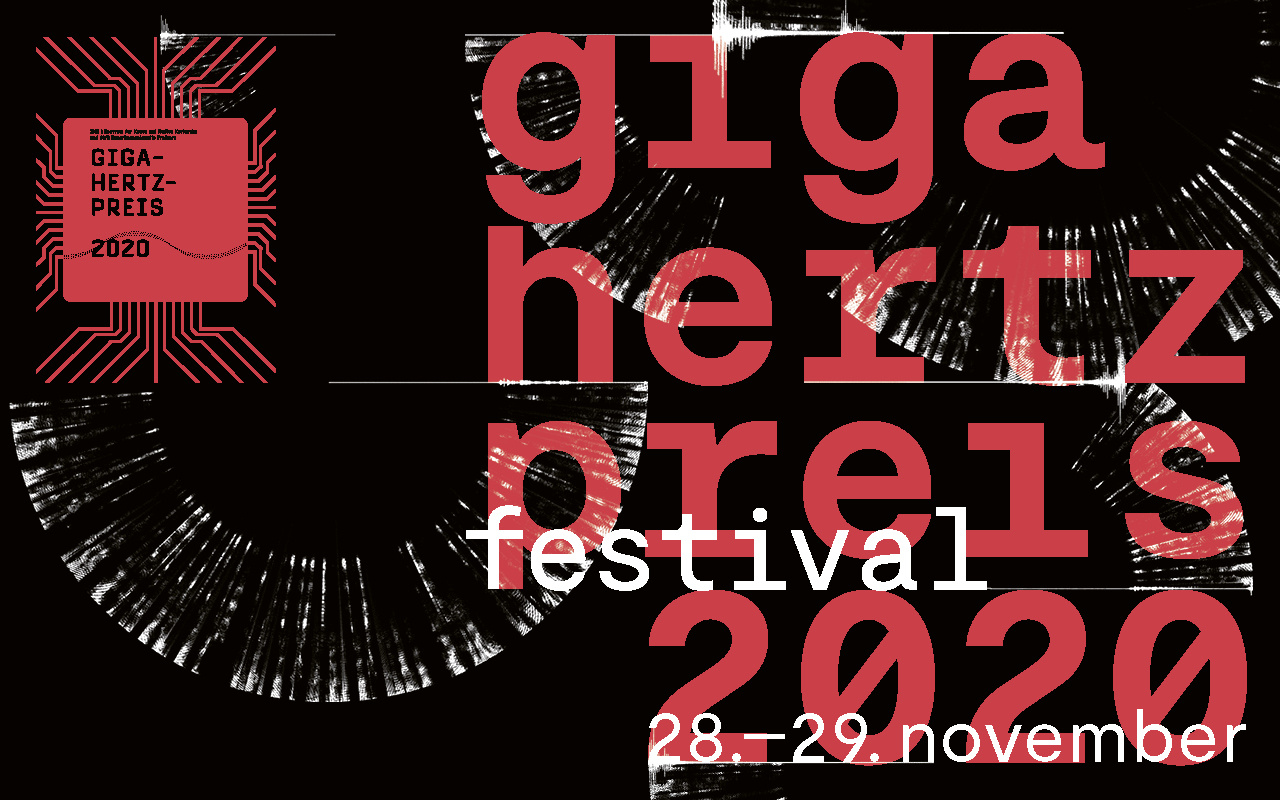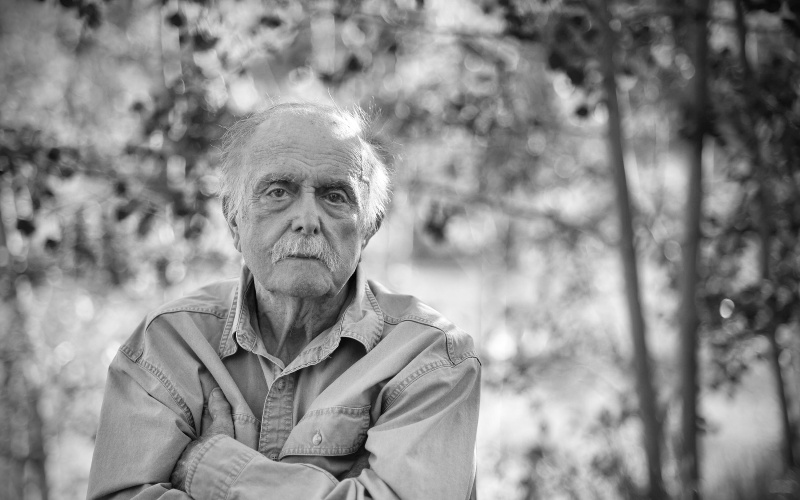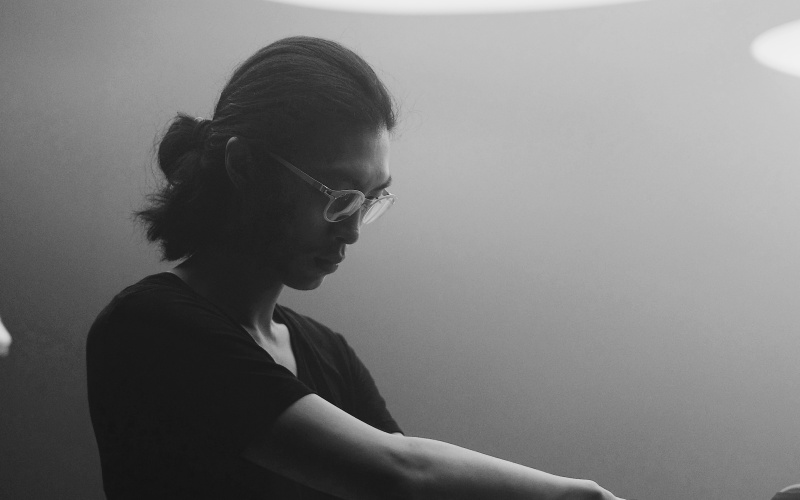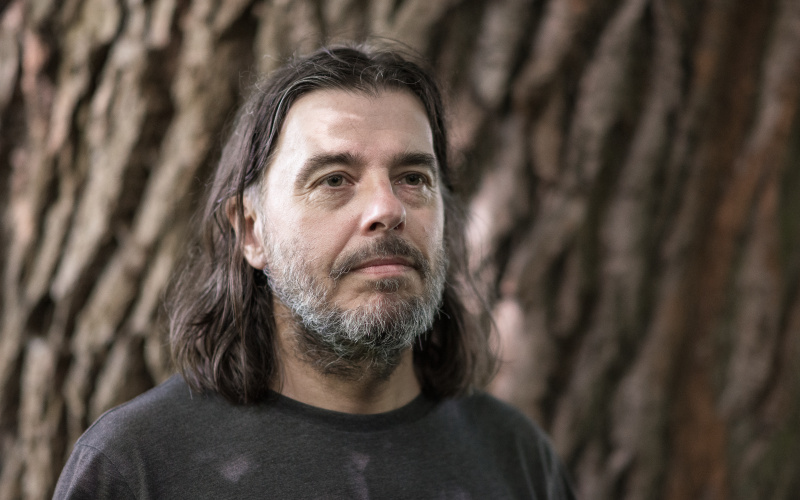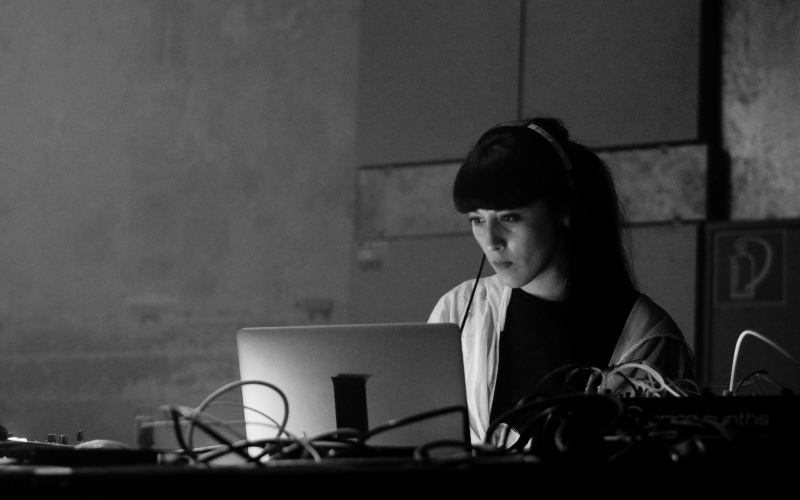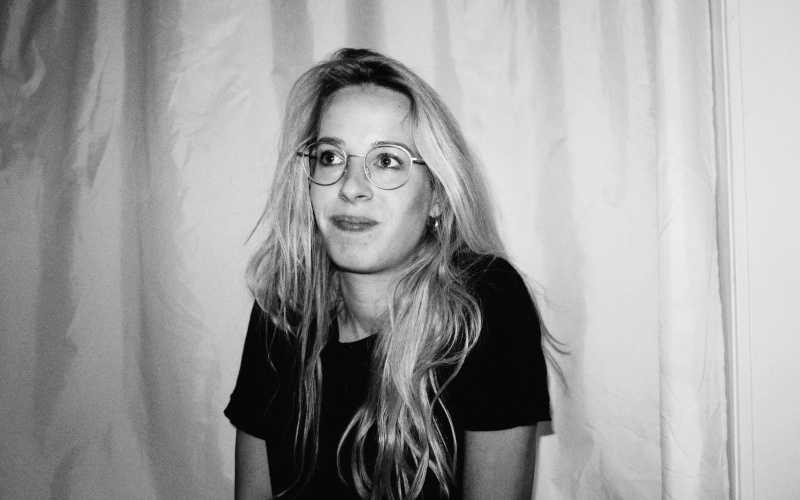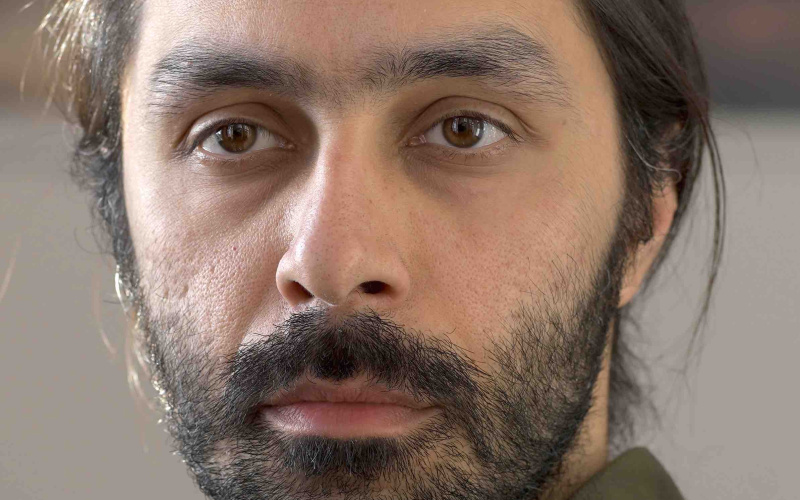Giga-Hertz Award 2020: Award Ceremony and Presentation of the Laureates
Sat, November 28, 2020 7:00 pm CET
- Location
- Online
Alvin Lucier receives the Giga-Hertz Award 2020 for his lifetime achievement. The Giga-Hertz Production Awards 2020 go to h0nh1m and Mark Pilkington. Honorary Mentions go to Annie Rüfenacht & Sandra Schmid as well as to Siamak Anvari.
This year, the Giga-Hertz Main Award 2020, with prize money of 10,000 EUR, goes to Alvin Lucier. Since the mid-1960s, the compositions of the American artist have had a lasting influence on new, experimental music and sound art. As a researcher, his works deal with the phenomenological fusion of acoustics, voice and sound as physical expression – electronic, instrumental or based on the natural oscillations of microphoned objects such as vases – and as partners in shared conversation.
Preface to the Award Ceremony
-
by Ludger Brümmer, Composer and Head of the ZKM | Hertz-Lab
»Welcome to this year's awarding of the Giga-Hertz Award. The international jury, consisting of the Norwegian-British composer Natasha Barrett, the director of the GRM Paris François Bonnet, the Swedish composer and Professor Dr. Palle Dahlstedt, the artistic director of the SWR Experimental Studio Detlef Heusinger, the musicologist and artistic director of the Donaueschinger Musiktage Björn Gottstein, the composer and director of the ZKM | Hertz-Lab Prof. Ludger Brümmer and the director of the ZKM | Karlsruhe Prof. Dr. h.c. mult. Peter Weibel selected captivating, contemporary artists and works from nearly 130 submissions. The process of distilling new trends and artistic qualities from the manifold submissions proved to be particularly exciting this year, guided by the high level of the submissions. Equally interesting was the reflection on which composer would be awarded this year's main prize. Here the life's work of the composer as well as the influence on the progression of electronic music is particularly important. The most important selection criterion here, however, is the technical or aesthetic innovation with which the further development of musical thought was evoked, or even provoked. Alvin Lucier as laureate of the Giga-Hertz-Award 2020 fulfils all these criteria to an outstanding degree. We are particularly pleased that, despite all the adversities of the current corona pandemic, we were able to realize not only the award ceremony, but also discussions and concerts. Even if you, dear listeners, unfortunately cannot be with us in the hall and will therefore not be able to experience the prize-winning artists directly. Since experiencing and reflecting on music is one of the most important things, especially in turbulent times like these, that enable us to immerse ourselves in the cathartic »Other« of life, we spared no effort in finding an alternative form for you to experience our prizewinners with their music and let yourself be captivated by it. We hope you enjoy immerging digitally in new electronic sound worlds and hope that you all stay healthy.«
Giga-Hertz Production Award
Moreover, the jury nominated two outstanding works out of about 130 international submissions: Chris Cheung alias h0nh1m will receive the Giga-Hertz Production Award worth 5,000 EUR for his audiovisual performance »RadianceScape 2016«. The piece, designed as an ongoing research project, visualizes live the radioactive radiation data of various large cities and relates them to the radiation data of Chernobyl and Fukushima.
The second Production Award, also connected with 5,000 EUR, goes to Mark Pilkington for his composition »Hidden Forest«. The algorithmic, audiovisual performance combines a variety of media elements and investigates the interplay of technology and ecology, of natural and artificial entities.
Honorary Mentions
In addition, the artists Annie Rüfenacht & Sandra Schmid receive an Honorary Mention for their audiovisual performance »Kataklasit« as well as Siamak Anvari for the electro-acoustic piece »Hafthasht« for 24 channels.
Jury Statements on the Award Winners
-
François J. Bonnet on Main Winner Alvin Lucier
Alvin Lucier is a key figure for anyone who would like to fully understand the unfolding of music during the second half of the 20th century until today. Along with Robert Ashley, David Behrman and Gordon Mumma with the »Sonic Arts Union« (active from 1966 to 1976), Alvin Lucier managed to pursue and renew the path traced by the American avant garde, in particular John Cage, by extending the compositional techniques towards devices and acoustic phenomena, thereby reshaping the process of composition itself. Music for Solo Performer (1965), using alpha brain waves as instrumental triggers, I Am Sitting in a Room (1969), focusing on the process itself as revelatory engine of the composition, or Music on a Long Thin Wire (1977), challenging the boundaries between musical composition and sound installation, are just a few examples of the constant search and exploration that characterizes Alvin Lucier’s music. His impact on the musical field is also fundamental in his teaching activities, notably at Wesleyan University (1968-2011) and in some of his writings, for example Reflections: Interviews, Scores, Writings (Köln, MusikTexte, 1995) or Music 109: Notes on Experimental Music (Middletown, CT, Wesleyan University Press, 2012). Also inspirational is his ability to perpetuate this curiosity about the sound phenomenon and the way we can experience it as humans - that is to say to extend, musically, the disarming experience of being human, facing a phenomenal world that you can’t decipher. This poetic curiosity has not only brought us Alvin Lucier over the years with an admirable freshness, longevity and consistency, but also more recently with fascinating works such as Criss-Cross (2013), Hanover (2015) or V (2018). It is by virtue of all these considerations that the jury is happy to award the Giga Hertz main prize to Alvin Lucier.
-
Detlef Heusinger on Production Prize Winner h0nh1m (Chris Cheung)
h0nh1m belongs to a new generation of artists who are working to abolish the separation of installation, audiovisual performance and technical realisation. In doing so, he pursues a virtuoso and independent path, especially in the visual field, as he uses sounding sign systems – such as waveforms – to set ciphers that refer to acoustic phenomena like an optical locating system. It was precisely this interaction between image and music that convinced the jury, as the animated images in combination with the music creates a fascinating pull that immerses recipients in an art world that, despite all its aestheticisation, also creates anxiety. This is certainly also to be seen as a political statement, as the sky over his home Hong Kong is threatening to darken. It is also significant that in one part of »RadianceScape« he has embarked on a journey through Fukushima, during which one believes to hear the Geiger counter. The Geiger counter as an acoustic sign of threat or of the passing of time reminds us of our own finitude or even that of humanity.
In the submitted part of the cycle, h0nh1m refers decidedly to Chernobyl and finds a higher degree of abstraction for it, as well as for the interaction of image and sound. Visually, it looks like a modernized reactor control station with its display panels. But acoustically there are references to Stockhausen's »Gesang der Jünglinge im Feuerofen« that expand the synthetic material with vocal voices. In this work, too, we are presented an aestheticized »Brave New World«, even if animated camera movements are omitted here. Instead, small flashes of light refer to the short circuits in the system, which should definitely be perceived in a figurative sense. For this musicalization of »Murphy's Law« and its sociological connection, h0nh1m is awarded the production prize. -
Palle Dahlstedt on Production Prize Winner Mark Pilkington
The relationship between the visual and the aural has fascinated musicians and artists for a long time. The neural phenomenon of synesthesia gives a direct sensory connection for some, and has served as a quasi-mythical inspiration for others. The list of synesthetic composers is long, and from the other side, many painters have approached musical thinking, with Paul Klee and Wassily Kandinsky as notable examples.
The medium of film introduced time to visuals, and allowed for visual experimentation with musical form and gesture in the evolving genre of visual music, pioneered by, for example, Oskar Fischinger, Len Lye, Norman McLaren, Mary Ellen Bute, and the brothers James and John Whitney.
In parallel, there was a dream of playing visuals like a musician. Already Georg Philipp Telemann - and later Alexander Scriabin – composed for color organs, and pioneering inventor and musician Mary Hallock-Greenewalt built a fully functioning visual instrument in the 1910s. In the 1960s, analog video provided further ground for real-time experimentation – pioneered by Nam June Paik and the Vasulkas – with analog video synthesizers allowing for gestural control of abstract and processed visuals. With today’s computers, live interaction with graphics and audio is generally available, and for the programming artist-musician they provide an ideal platform for synesthetic explorations.
Being engineer, visual artist and electronic musician, Mark Pilkington combines all these strands in a natural way, clearly aware of the history of audio-visual expressions. His work »Hidden Forest«, implemented as a live computer algorithm or a fixed media work, is centered around the idea of natural and artificial ecosystems, and the concept of movement as manifesting living presence and time. Sound and light evolve in tight synchrony, applying the composer’s own drawings, photographs and film mapped as graphic scores, and using models of ecosystemic interactions as further processual input.
»Hidden Forest« shows inspiration from the visual music tradition, and from composers such as Iannis Xenakis, linking mathematics, science, geometry and musical structure. With the added component of gestural control combined with analog modular synthesis, the composer is able to interactively perform on and with the work.
»Hidden Forest« calls attention to the burning environmental issues of combining the natural and the artificial, and while being deceptively simple and elegantly implemented, the piece unveils the complexity of the underlying matter, and the unpredictability of complex systems in nature, in code, and in analog synthesis. -
Björn Gottstein on Honorary Mention Anni Rüfenacht & Sandra Schmid
The jury of the Giga-Hertz-Award 2020 awards the Swiss artist duo Annie Rüfenacht and Sandra Schmid an honorary mention. The jury was impressed by their work »Kataklasit«, with which Rüfenacht and Schmid explore visual and acoustic aspects of stones. Their meticulous approach, bordering on scientificity, uses a microscopic eye and ear to achieve a highly abstract dissolution of the recrystallisation processes. The result is a visual surface that traces changes in the structure of the stones which is reflected in multiple, finely graduated and dissected shades of grey, as well as an acoustic surface that illustrates the subliminal nature of the processes by oscillating between field recordings and coloured noise. In its overall effect, however, »Kataklasit« stands out especially for its fine, harmonious and atmospheric overall impression. The double character of the work, between scientificity and abstraction, impressed the jury to a great extent.
-
Ludger Brümmer on Honorary Mention Siamak Anvari
The almost 17-minute composition »Hafthasht« contains unusual, seemingly sparsely processed sounds that give the audience plenty of room for its own world of thoughts. No golden thread leads the listener along a calculated, expectable compositional course. Instead of this, situations appear, archaic sound types that evoke a virtual action or simply situations. In terms of interpretation, the sounds leave behind riddles and open spots, although they are fascinating and have a clear material affiliation at the same time.
Compositionally, Anvari follows the idea of sound reflection, which repeats the material but changes its tonal components by more or less damping trebles. He also makes the time between the original and its reflection a compositional observation element. This narrative thread, so important for the construction, is not absolutely necessary for the reception of the work, but as a meta-level it can enrich the decoding of the compositional strategy.
Beginning with simple, permissive, almost featureless tones and sequences of notes, he changes the tonal vocabulary almost unexpectedly to recumbent sounds like those of unreal but enchanting wind instruments. Repeating this change, he arrives at more and more remote levels of reality.
Siamak Anvari composed the work in a 24-channel surround sound version, which allows the nebulous, abstract and yet expressive character of the composition to be experienced immersively. The jury was impressed by the immediate effect of the sounds in Siamak Anvari's composition, by the immediacy and freshness of the sounds, as well as by the appeal it is able to unfold.
